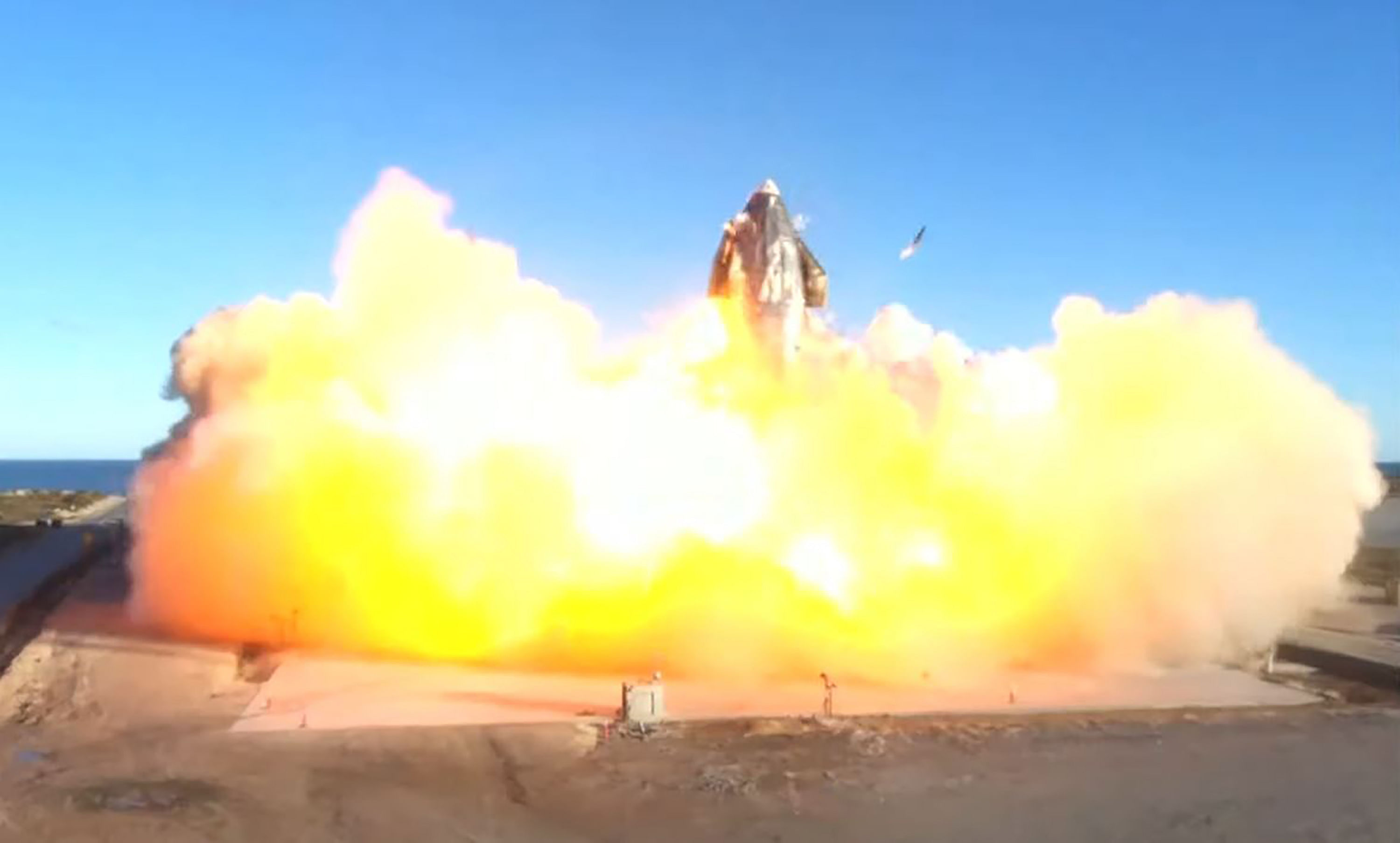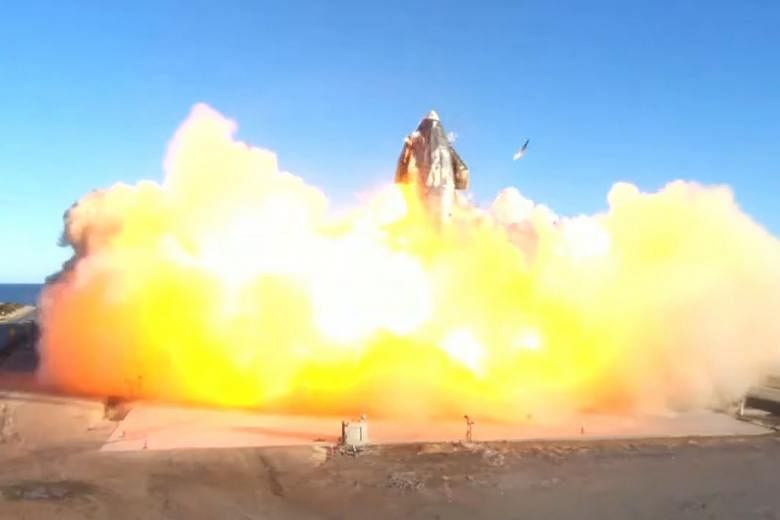HOUSTON (NYTIMES) - A test of a prototype of a rocket that Elon Musk has dreams of sending people to Mars in flew several miles high on Wednesday. But in attempting to land, it hit the ground too fast and exploded.
That was the latest test, partly successful, in the development of next-generation spacecraft built by SpaceX, Musk's rocket company.
SpaceX's live broadcast showed the smouldering remains of the rocket, named Starship, at the company's test site in southern Texas. "Awesome test," read text across the screen of the broadcast after the fiery conclusion. "Congratulations, Starship team!" A voice in the broadcast noted that 911 was being been called.
With the late afternoon sun low on the horizon, the gargantuan stainless steel spacecraft lifted off from a launchpad at 5:45pm local time. After reaching its apogee, it started falling, as planned, tipping over in a controlled glide back to Earth.
Near the ground, it righted itself back to a vertical orientation and fired its three engines to slow down - but not enough. Upon impact, about 6 minutes, 40 seconds after liftoff, it disintegrated in a fireball, leaving a cloud of smoke rising over the test site.
Still, it was an advance in SpaceX's development efforts. Earlier prototypes disintegrated without ever leaving the ground during tests that simply pumped ultra-cold liquid propellants into the rocket's tanks.
SpaceX has become successful in the launch business, and it is now the world's most valuable privately held company. Its Falcon 9 rockets have become a dominant workhorse for sending satellites to orbit. It routinely transports cargo to the International Space Station, and has lifted NASA astronauts there twice this year, with more trips planned in 2021.
However, many are sceptical when Musk says the company is just a few years away from sending a Starship to Mars, and he has repeatedly set timelines for SpaceX that proved far too optimistic in how quickly they have come to pass.
Last year, when he provided an update on the development of Starship, he said a high-altitude test would occur within months and orbital flights could occur early this year.
Instead, several catastrophic failures happened because of faulty welding. When the propellant tanks stopped rupturing, one of the prototypes made a short successful flight in September. That earlier Starship model, which resembled a spray paint can with the label removed, lifted itself using a single rocket engine nearly 500 feet (150 metres) before setting down at the Texas test site near the village of Boca Chica.
While SpaceX is a long way from achieving Musk's Martian goals, the piece of his company that he hopes will fund trips to and from the red planet won a victory this week. Since 2019, SpaceX has launched hundreds of satellites to low-Earth orbit to build a constellation called Starlink that aims to provide high-speed internet service from space. One of Starlink's stated goals is to provide broadband access to underserved places.
On Monday, the Federal Communications Commission announced the award of billions of dollars in funding to an array of internet service providers to expand broadband access in such locations, and SpaceX received an award worth US$885 million (S$1.18 billion).


